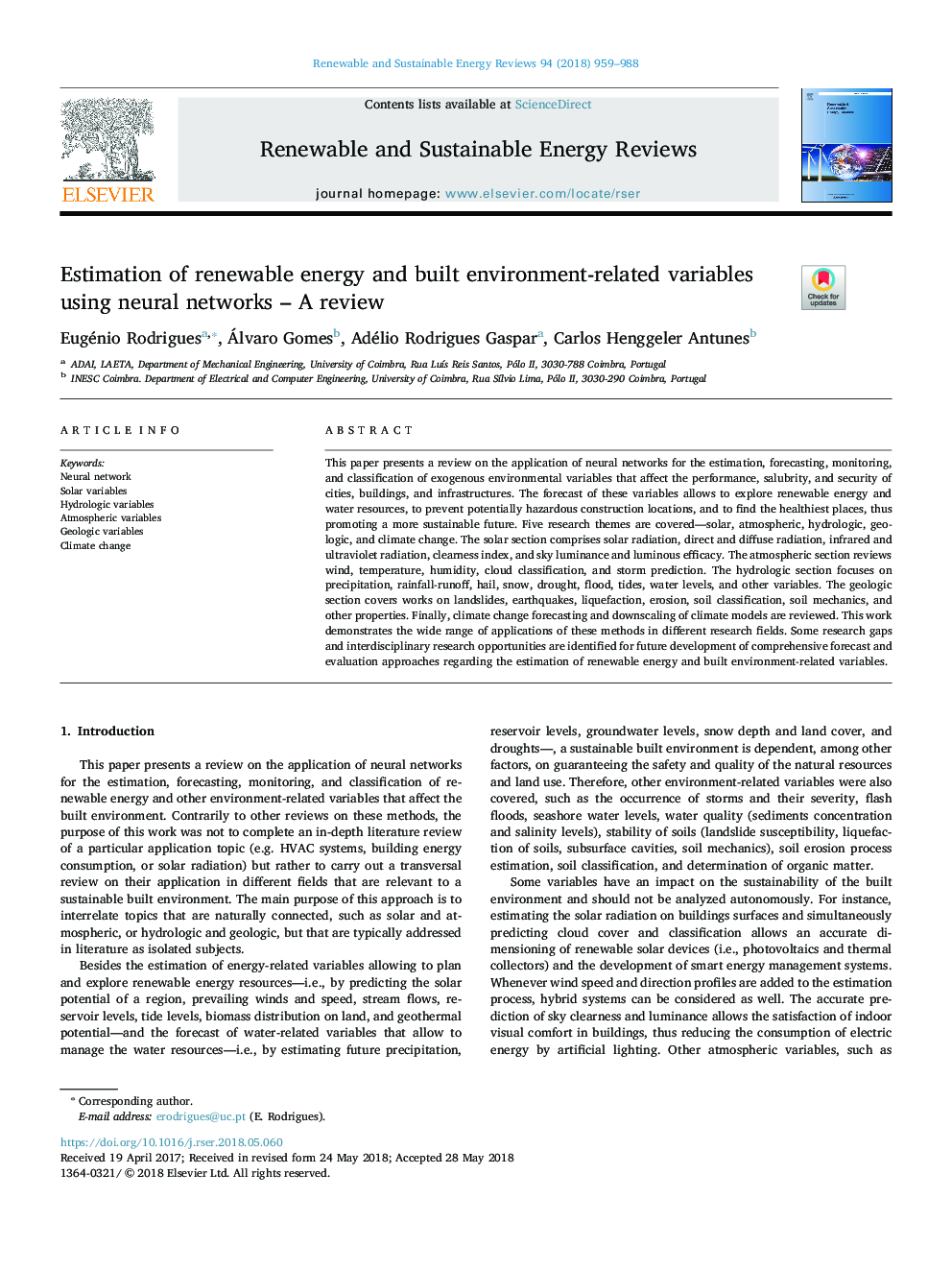| Article ID | Journal | Published Year | Pages | File Type |
|---|---|---|---|---|
| 8110581 | Renewable and Sustainable Energy Reviews | 2018 | 30 Pages |
Abstract
This paper presents a review on the application of neural networks for the estimation, forecasting, monitoring, and classification of exogenous environmental variables that affect the performance, salubrity, and security of cities, buildings, and infrastructures. The forecast of these variables allows to explore renewable energy and water resources, to prevent potentially hazardous construction locations, and to find the healthiest places, thus promoting a more sustainable future. Five research themes are covered-solar, atmospheric, hydrologic, geologic, and climate change. The solar section comprises solar radiation, direct and diffuse radiation, infrared and ultraviolet radiation, clearness index, and sky luminance and luminous efficacy. The atmospheric section reviews wind, temperature, humidity, cloud classification, and storm prediction. The hydrologic section focuses on precipitation, rainfall-runoff, hail, snow, drought, flood, tides, water levels, and other variables. The geologic section covers works on landslides, earthquakes, liquefaction, erosion, soil classification, soil mechanics, and other properties. Finally, climate change forecasting and downscaling of climate models are reviewed. This work demonstrates the wide range of applications of these methods in different research fields. Some research gaps and interdisciplinary research opportunities are identified for future development of comprehensive forecast and evaluation approaches regarding the estimation of renewable energy and built environment-related variables.
Related Topics
Physical Sciences and Engineering
Energy
Renewable Energy, Sustainability and the Environment
Authors
Eugénio Rodrigues, Álvaro Gomes, Adélio Rodrigues Gaspar, Carlos Henggeler Antunes,
